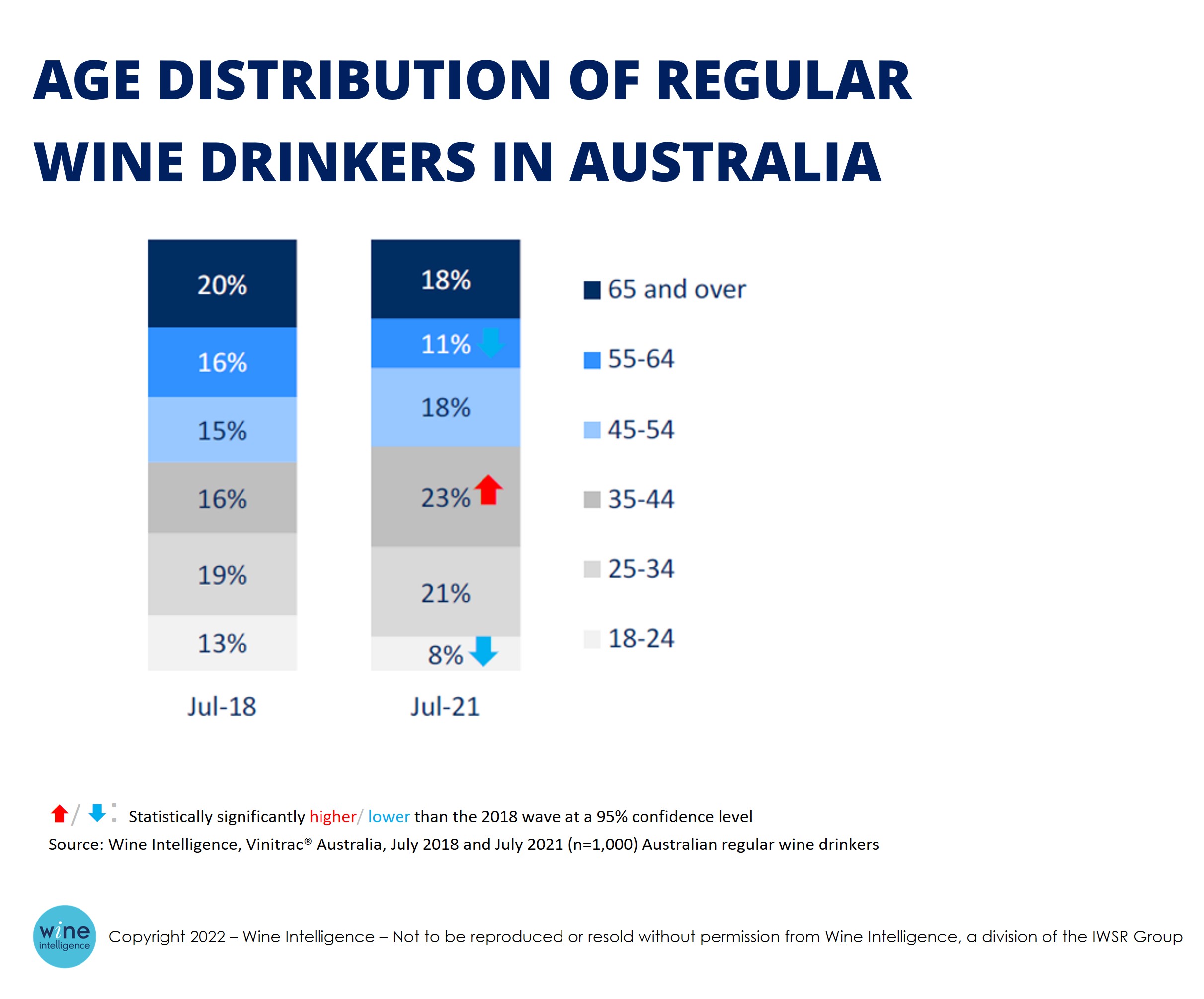Over the past 2 years, countries around the world have had a similar problem – the Covid-19 pandemic – but have dealt with it in a variety of ways. While some markets have adopted a much less stringent approach to controlling the virus, Australia responded to Covid by sealing off the country’s borders and putting strict lockdowns in place.
Not surprisingly, these dramatic and long-lasting government restrictions have had a profound effect on consumer behaviour. Equally predictably, some of the context has filtered into wine consumer behaviour, in terms of short-run trends away from buying wine in on-premise and towards using e-commerce. However some other trends look to be more fundamental, and the Covid experience has simply accelerated them.
While overall wine volumes remain on a steady downward trajectory – showing declines of approximately -1% volume CAGR, 2016 to 2021 – spend per bottle has been heading in the opposite direction, as Australian consumers moderate their consumption and choose better quality products to drink.
Behind this change is a fundamental demographic shift in Australia’s wine drinking population, perhaps the most fascinating long-run trend to be exposed by Covid. In major markets across the globe, the wine industry is becoming increasingly reliant on low-involved, value-oriented consumers over the age of 55 to drive their business, while younger LDA consumers turn to other categories. Not so in Australia, where the biggest change in the population post-pandemic is the growth of Millennials as a major and meaningful driver of behaviour in wine.
This group differs from their elders in that they are looking more for variety and experiences, and are less moved by low prices, and/or reliable and familiar brands. Brands still move, and promotions are still important; yet newer consumers also appear to value the idea of buying something more personal, unusual, and meaningful, which is typically more artisanal, and more expensive.
Our data suggests there is a link between this more exploratory behaviour and the enforced changes in purchase channel over the past year. The e-commerce environment – particularly direct-from-producer – lends itself better to uplifting narratives, quirky products and wines to talk about than a mainstream retail environment, and the major drivers of e-commerce wine growth are, not surprisingly, this same cohort of younger adult drinkers.
The big question remains how ‘sticky’ this behaviour will be when life returns to normal. To address this question, one must consider two subsidiary questions: when will the conditions required for normal life resume? And, as these conditions fall into place, to what extent will consumers re-adopt old habits?
The early evidence is that conditions for normal life are starting to crystallise. Following a slow start, vaccine rollouts have been effective in Australia, and travel is starting to open up. Foot traffic in Australian shopping districts and supermarkets, as measured by Google Community Mobility Reports, appears to be close to the pre-pandemic baseline of 2 years ago. According to data released in November 2021 by CSIRO, Australia’s national science agency, an average of one in five Australians were working from home in the first half of 2021.
In light of this, how will Australia’s wine drinkers react? The key measure here will be comfort levels among Australians going about their “normal” activities. The evidence collected by Wine Intelligence on this topic, from July 2021, suggests that consumers are still net less likely to go out to bars, or to attend social events compared with pre-pandemic, but socialising outdoors and going to restaurants is now as likely as it was before Covid. They are more likely to be treating themselves to better wines, but less likely to attend a sporting event or travel by air. Shopping for wine in physical stores is more likely, but so is shopping for it online.
How the industry reacts will also be an important factor. Much will depend on how effective the new e-commerce channels are at retaining their new customers, and how much of a fightback will come from the established bricks & mortar (B&M) retailers and from major brands, whose grip of the market has lessened as a result of Covid.
You may also be interested in reading:


Leave a Reply
Want to join the discussion?Feel free to contribute!